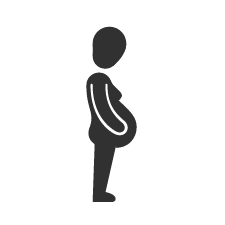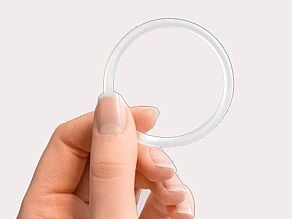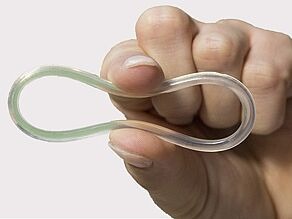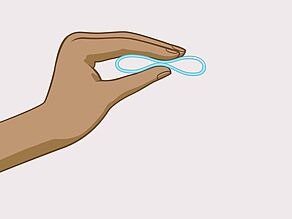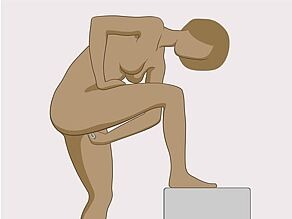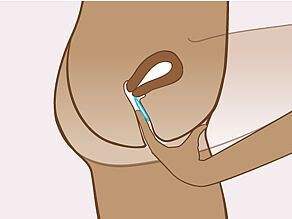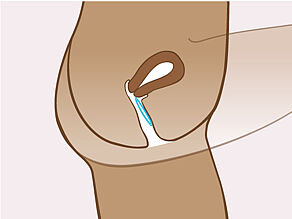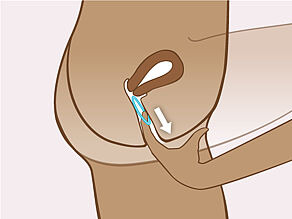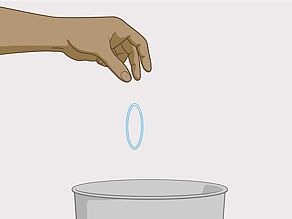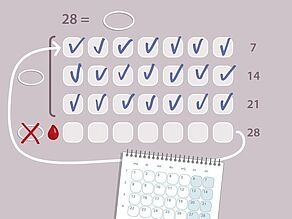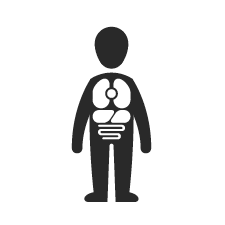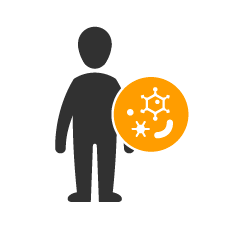The vaginal ring is a method of contraception.
The vaginal ring is a thin, flexible ring made of plastic. It contains the same 2 hormones as the contraceptive pill. These hormones prevent ovulation. They also make it more difficult for sperm cells to enter the uterus and reach the egg cell.
How to use a vaginal ring
Use a vaginal ring as follows:
- Squeeze the ring.
- Put the ring up inside the vagina. You can insert the ring in different positions, for example: standing with 1 leg up, lying down or squatting.
- Put 1 finger inside the vagina and push the ring up as far as possible.
- The ring stays in place when having sexual intercourse. You can remove the vaginal ring during sexual intercourse, but you need to insert it again within 3 hours.
- To remove the ring put your finger into your vagina and hook it through the ring. Gently pull it out.
- After 3 weeks of continuously wearing the ring, throw it away in a bin. Remove the ring on the same day of the week as when you inserted it (for example: Wednesday).
- For the next 7 days (1 week), you do not use the vaginal ring. This week, you will start to bleed (menstrual period). You are also protected in this week.
- After 7 days (1 week) you insert a new ring, even if you are still bleeding.
- Repeat the previous steps.
Reliable
The vaginal ring is very reliable if used correctly.
The vaginal ring is not reliable, or is less reliable, if:
- You are taking antibiotics or pills against epilepsy. Check with a doctor or pharmacist;
- You forget to put the vaginal ring in after the 7-day break, or if you forget to change it;
- You lose the vaginal ring and do not put it back, or insert a new one, within 3 hours.
The vaginal ring can be used up to 4 months after you buy it in the pharmacy.
Does not affect your health
The vaginal ring contains hormones. These hormones do not generally affect your health.
In some cases it is better, however, to choose another method of contraception. For example: if you smoke more than 15 cigarettes per day and are aged over 35, if you have a high risk of getting a heart disease or vascular disease. Ask a doctor for advice.
The vaginal ring does not make you less fertile. If you want to get pregnant, you just remove the vaginal ring.
During the first months of use, you may have side-effects like headaches, vaginal infections and nausea. They usually disappear on their own. If they do not, consult a doctor.
Your menstrual periods often become less heavy and less painful.
Protection against STIs and HIV
The vaginal ring does not protect against STIs or HIV. Only a condom can protect you.

